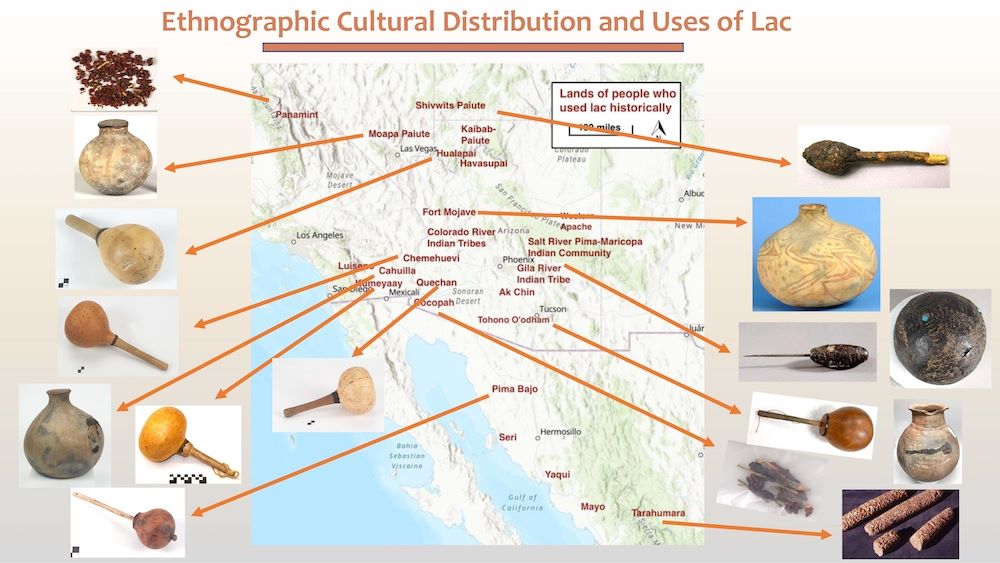- Home
- >
- Preservation Archaeology Blog
- >
- Insect Lac in Southwestern Cultural Heritage
(November 19, 2024)—Several species of Tachardiella, lac scale insects, live in the arid Southwest as sessile phloem feeders on a variety of different host plants from various families. The insects produce a hard, waxy, resinous coating as a defense mechanism from predators. People throughout the region discovered that when this hard resin was heated, it made an excellent glue or adhesive for manufacturing tools, weapons, musical instruments, kicking balls, ornaments, and amulets. Heated insect lac also made an excellent resist material for shell etching and repair material for cracked and broken pottery. When applied to the lids on rims of certain jars, the lac would seal the jar and protect the seeds and other food stuffs stored inside from rodents and other pests.
I will describe the three species of Tachardiella lac scales that are known to have been used to manufacture artifacts in the Southwest, their primary host plants, and ecology. In addition, I’ll briefly discuss the extent of cultural use in the Southwestern region from ancient times into the twentieth century.
Three Species of Tachardiella People Used in the Arid Southwest
The Tachardiella genus of scale insects is one of 10 genera in the Kerriidae family. Tachardiella consists of 17 species of scale insects, all found in the Americas. Seven of those species live in the arid Southwest and the three that are known so far to have been used to manufacture cultural materials are as follows.
Tachardiella larreae’s primary host plant is Larrea tridentata (Creosote bush), found in the bajadas, valley floors, and washes of Arizona, California, Nevada, New Mexico, Texas, and Utah, as well as Sonora, Mexico.
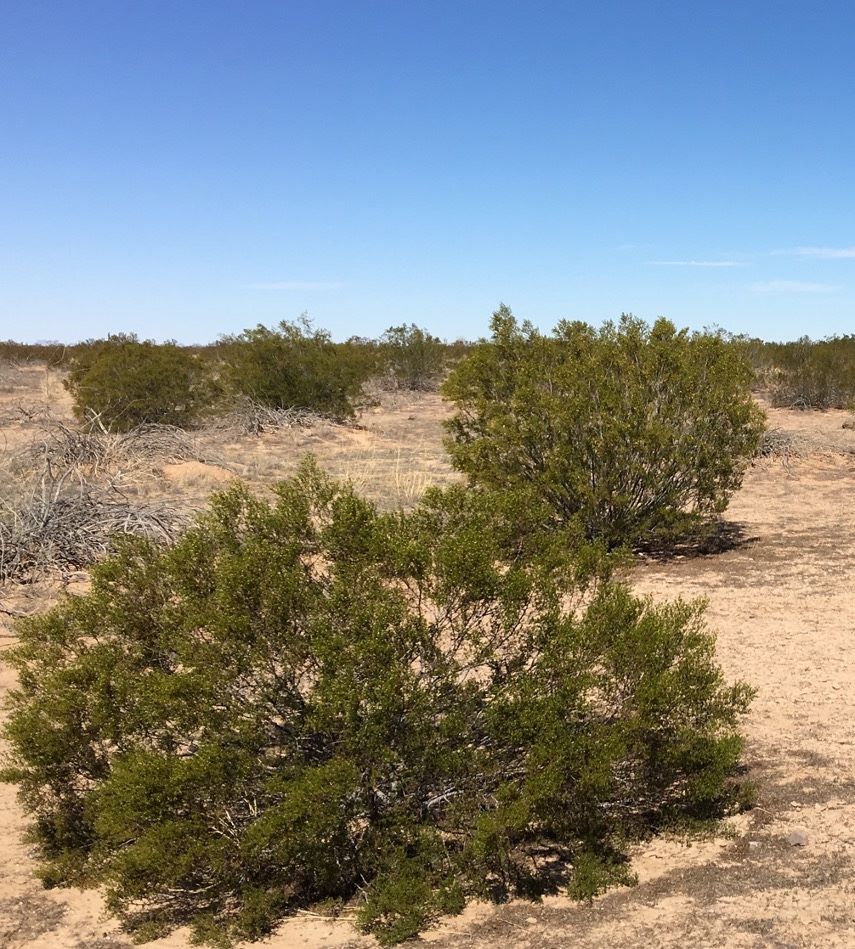
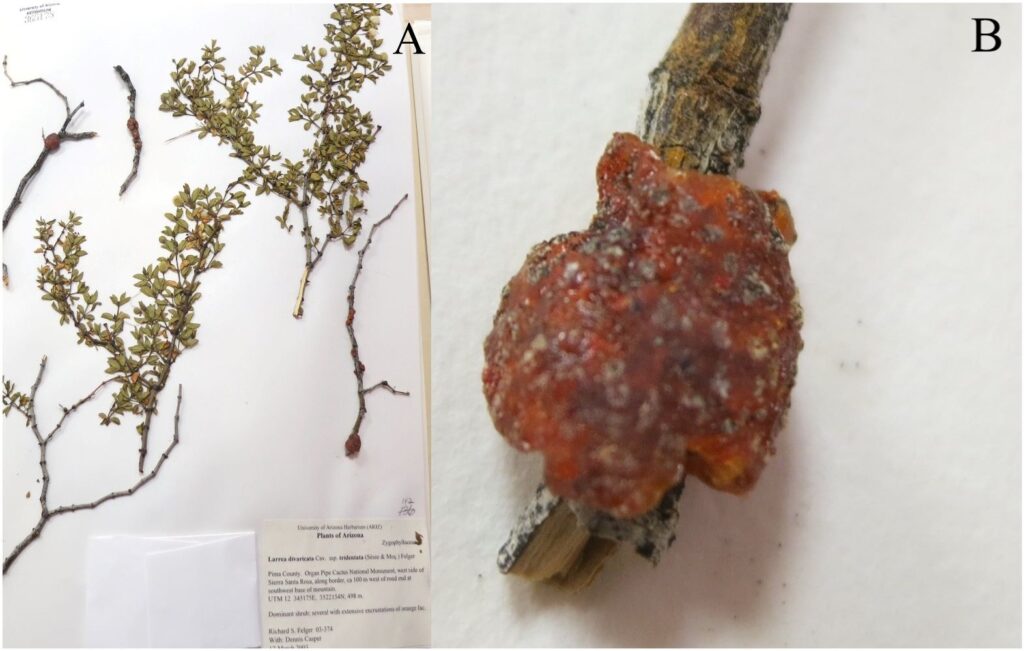
Tachardiella fulgens’s primary host plant is Coursetia glandulosa (Rosary babybonnets), found among the rocky slopes, foothills, and washes of Arizona, and those of Sonora and Chihuahua, Mexico.
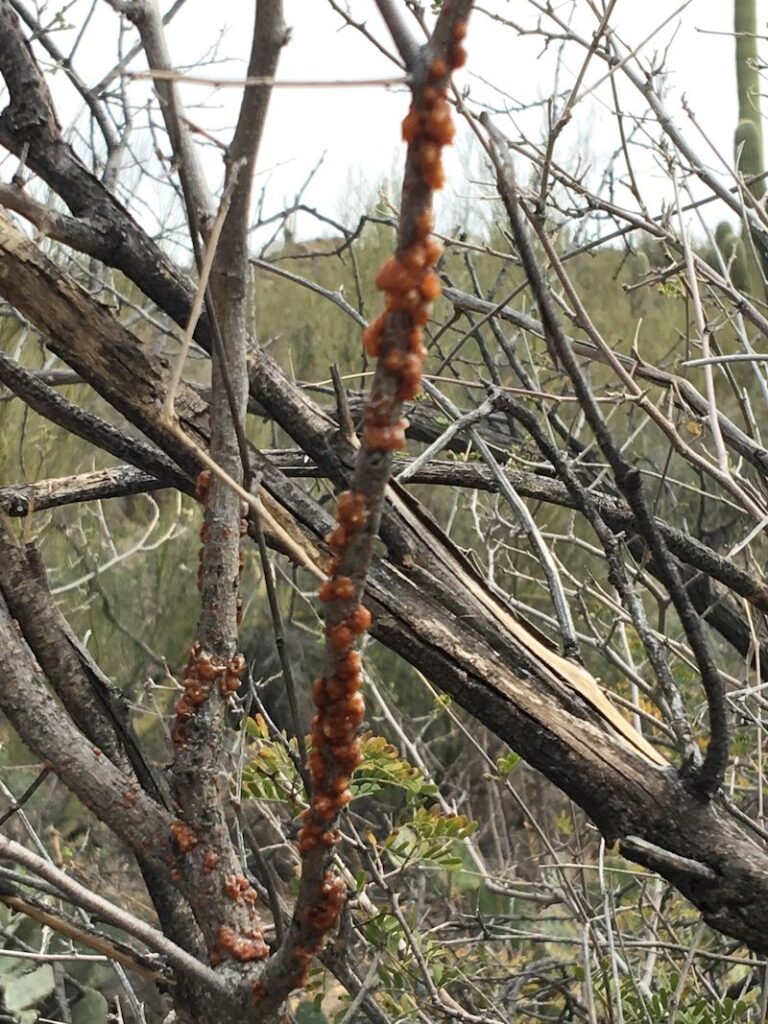
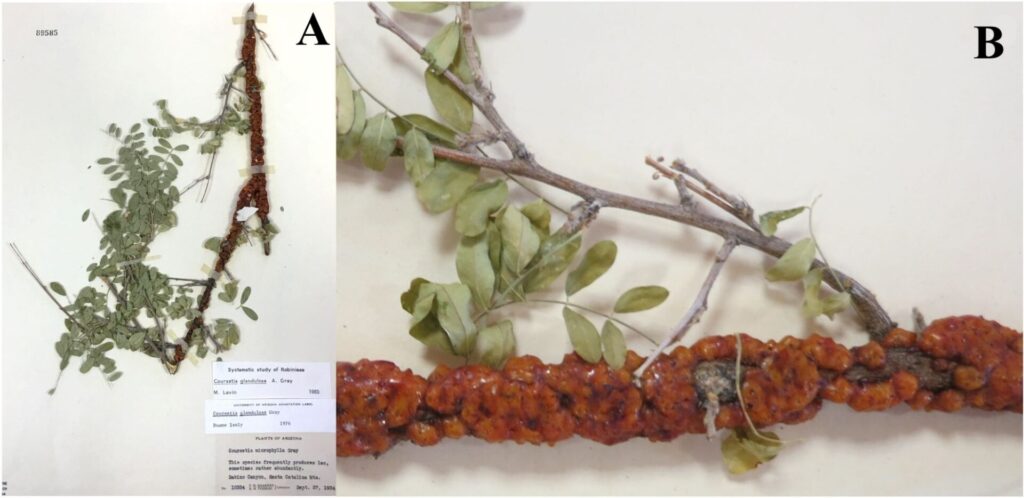
Tachardiella pustulata’s primary host plant is Pluchea sericea (Arrowweed), found in wetlands and along streams in Arizona and California, as well as Sonora, Mexico.
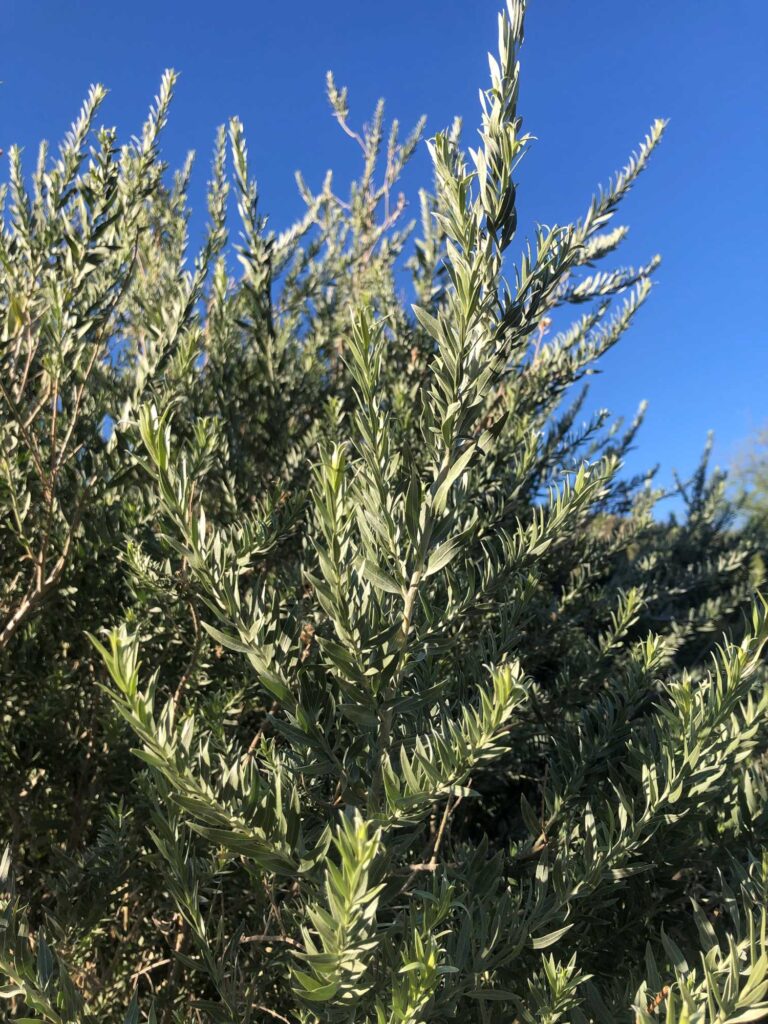
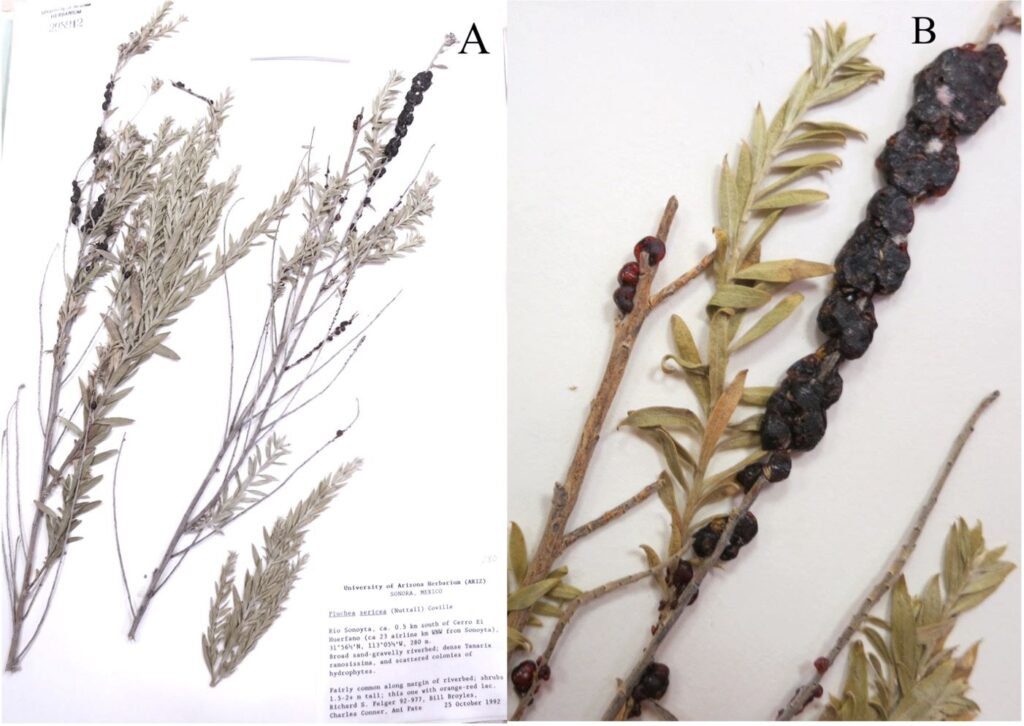
What Is Lac? And What Other Adhesives Did People Use in the Southwest?
Insect lac adhesive has often been confused with other adhesive materials used in artifact manufacture in the arid Southwest, including plant gums and resins, bitumen and asphaltum.
Bitumen is a by-product of crude oil. Bitumen has no inorganic material but is often synonymous with the term asphaltum. Asphaltum, or asphalt, is composed of bitumen as a binder combined with an inorganic aggregate material.
Gums are water-soluble plant exudates made of carbohydrate polymers. Examples in the Southwest include mesquite gum, seed starches and cactus mucilage.
Resins are water-insoluble exudates of plants and insects composed of hydrocarbons. Plant resins are typically composed of volatile and non-volatile terpenoids and phenolics. Insect lac resins are composed primarily of polyesters and waxes. Examples of plant resins used in the arid Southwest include pine pitch, juniper resin, creosote bush resin (Larrea tridentata), and brittlebush resin (Encelia farinosa).
Chemically, lac is a highly complex material consisting of numerous compounds. In simple terms, we can call it a polyester wax oligomer with dye components. Lac dye from Asia and Cochineal dye from another New World scale insect, Dactylopius spp., were highly prized commodities for global trade before the production of synthetic dyes in the 1800s.
Cultural Use of Lac in the Arid Southwest
Artifacts excavated in 1939 at Ridge Ruin, a Sinaguan site near Flagstaff, AZ included raw lac, stick lac, mosaics, ornaments, and stone points made with insect lac. McGregor’s (1941) report of this excavation was the first published study of the archaeological use of lac in the Southwest. This excavation and discovery cultural use of lac inspired entomological distribution research by Dr. Harold Colton a zoologist, anthropologist, and founder of the Museum of Northern Arizona (1943). In the 1990s scholars such Fox and Sutton (1995) and Stacey and Sutton (1998) examined the archaeological uses of lac found in the Great Basin region.
The Save Americas Treasures Pottery Project at the Arizona State Museum (ASM) in the 2000s revealed use of lac as a pottery repair adhesive and as a sealant for food storage. During this project, the ASM Conservation lab utilized a combination of microchemical tests, UV light examination, and FTIR to study the variety of adhesives and other materials used on the objects (White et al., 2009). A later Archaeological Perishables Project at ASM revealed the use of lac as an adhesive for hafting arrows and knives, and as a mastic for turquoise.
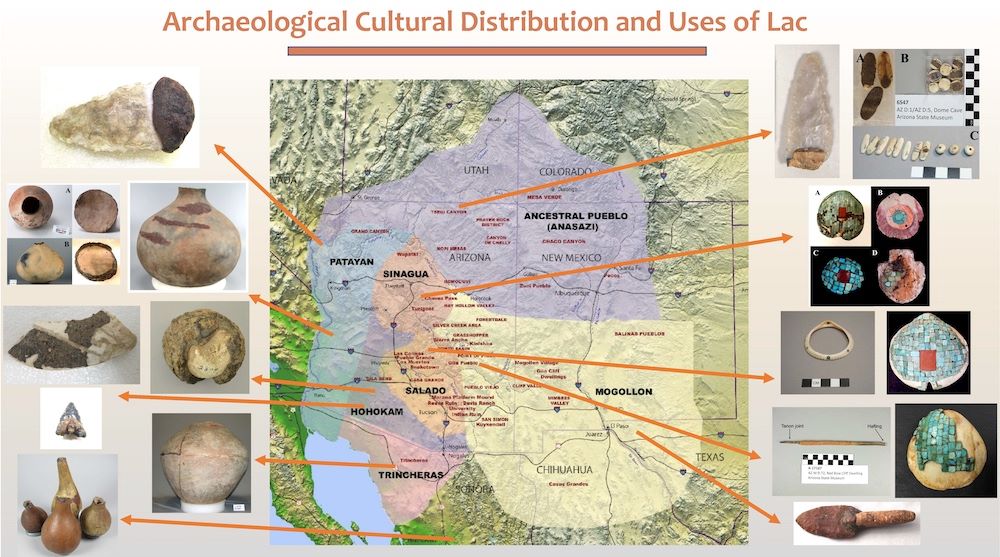
In the post-colonial contact era, people in the Southwest continued to fabricate objects with lac, but the object types shifted to more utilitarian rather than prestige or ornamental objects made in the past. As shown in the figure below, awls, knives, rattles, and pottery repairs were common uses of lac in this period. The distribution of lac use constricted considerably in comparison to the earlier era.
